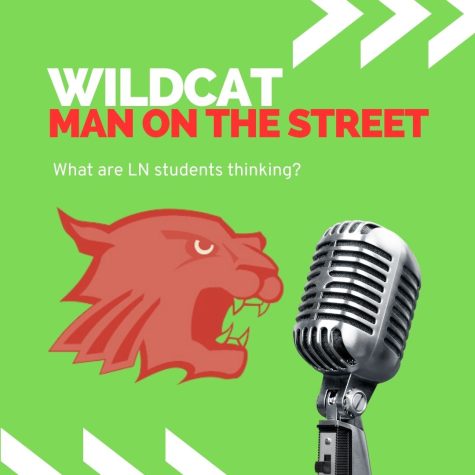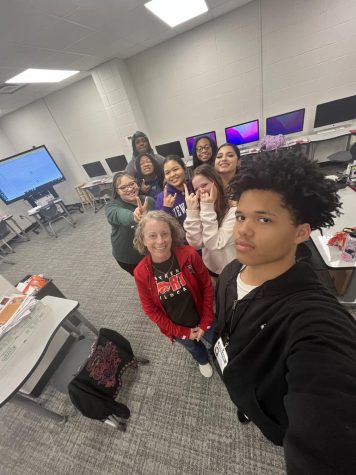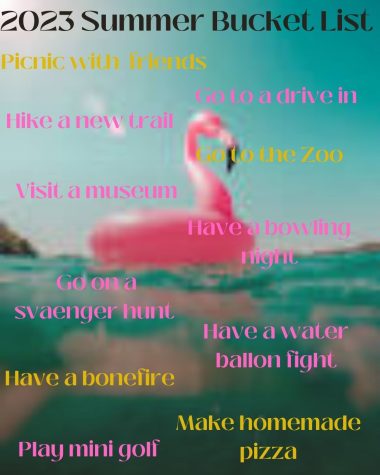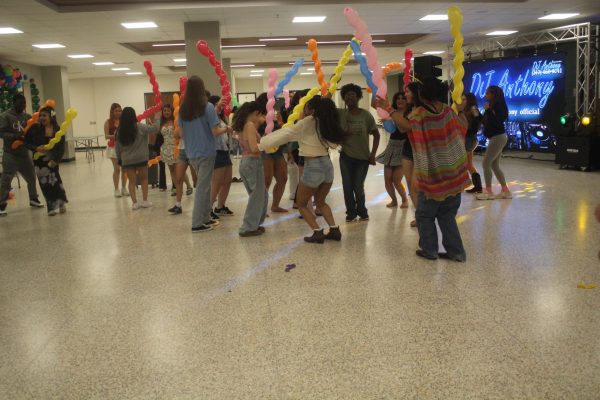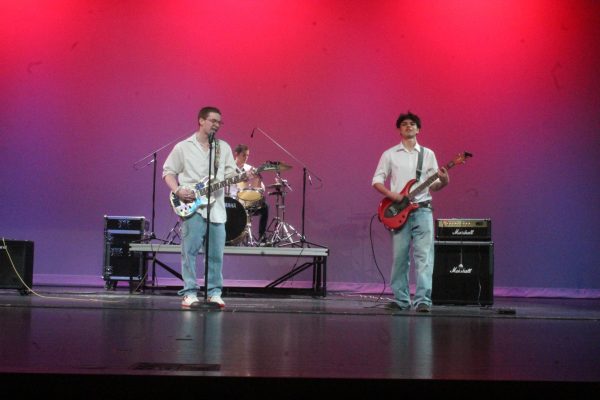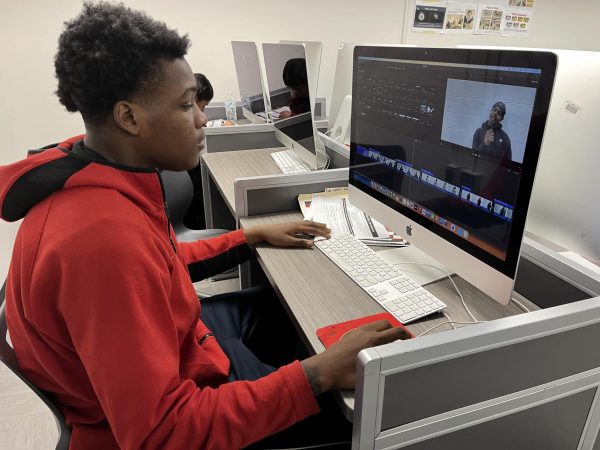All eyes on AI
Students, teachers adjust to using ChatGPT in classrooms
Senior Coy Drane recently used ChatGPT to help assist him with writing a script for Radio and Television.
“It was helpful because I didn’t want to have to write the story myself, and I wanted something that I could film a video of, so I used it to be creative and come up with my own story,” Drane said.
Drane put specific information into the app of what he was looking for in his script, and then with a push of a button, the AI program spit out a finished product. With the AI at work, Drane was able to focus on the rest of the assignment without worrying about the longer parts of it.
“I was able to focus on the cinematography, and doing what I wanted to do with the video rather than writing the story,” Drane said.
Using AI in the classroom is starting to become more common, especially with the launch of ChatGPT in November 2022. ChatGPT gathers most of its info from Wikipedia, books, news articles, and scientific textbooks and journals. It can assist people with composing an email, coding, or writing an essay.
Tonya Fisher, the eLearning and Instructional Specialist of LN recently observed the app for student use in the district and she had her own thoughts about the use of the site in the classroom. She noticed teachers encouraging students to use it as a resource.
“I have not necessarily seen students use it, but I do know from teachers that students are starting to use it more, while thinking about what they’re summarizing and writing about,” Fisher said.
Fisher views the site as a shift into how writing is taught. Because she was accustomed to an environment where she had to manually teach kids the best ways to write, it served as a culture shock for her.
“Technology has always come in and taken the place of some things that we used to have to do by hand. For example, when I taught English, I used to have to teach kids how to cite sources and put in all of the punctuation and format those, and now I don’t have to since there’s technology that does that for us,” Fisher said.
Fisher thinks that AI will not be able to properly replicate creative thinking, and it can’t give students anything more than a base idea.
“It lacks engagement in the same way that someone writing an essay could give you. Writing it by yourself, you’re able to think about how to put things together,” Fisher said.
The voice of the AI is harder to properly replicate, as it doesn’t always type in a natural linguistic way. This being a newer AI program, it could develop over time, and the way it processes information from the internet can be flawed.
“Because the internet does include a lot of bias and incorrect information out there, so you have to take that into account while inputting data from there,” Fisher said.
Through figuring out what is considered a good source and what isn’t, people can have power over an AI as they can only gather information without fact checking it.
As teachers provide the AI as a tool to students, setting guidelines as to what you can input to make sure they are not completely plagiarizing the work is important.
“When looking at an essay input through an AI, we could consider: As students, how would you evaluate this? What would you have to change, how would you add your own voice, in order to look at it more analytically,” Fisher said.
The thing that separates humans from AI is people’s indivudal opinions, and the ability to have their own voices that they can express themselves with. And while ChatGPT can replicate a human voice text-wise, It doesn’t carry the voice that a human could have.
“Even though it has more of a natural language sound to it, it doesn’t have your particular voice behind it. So you would ask: how do you own that? What would you add to it, change to it, to make it yours?” Fisher said.
English Teacher Dan Bender has noticed students using ChatGPT as a resource in his class as well, mainly for the wrong reasons.
“Some students are using it to plagiarize their paperwork by asking it to write things for them, which I would prefer people not to do as it is unethical. You don’t learn anything from that process,” Bender said.
However, what is becoming more acceptable for students is to use the tool as a guideline for their work, or for proper research regarding the topic of their work. Bender believes that this is the best way to utilize AI as a presence in the classroom.
“I’ve worked with some of my students, especially in my composition class, to help generate research ideas, to think about topics and approaches they could use, and that sort of tactic is a positive thing because it makes it easier for them to think of things that they can do with their own work,” Bender said.
Conducting research is also less of a hassle with ChatGPT as it delivers information quickly and comprehensively, compared to what students might find using the search tool.
“For example, if a student needed to write a research paper, they could go to that site and ask ChatGPT about possible sources that would make good research for this topic. It would give you a list and it would probably be more accurate than research done by doing a Google search,” Bender said.
Drane finds the AI’s ability to find and relay information in a more digestible way useful in school.
“You can’t rely on it for everything in the class, and there’s definitely some stuff that it can’t do that well, but I think using it as a replacement for search engines like Google could be helpful,” Drane said.






